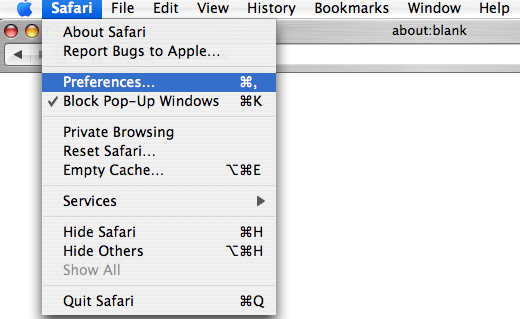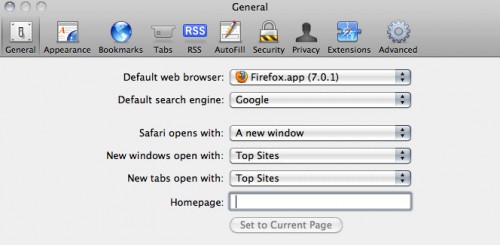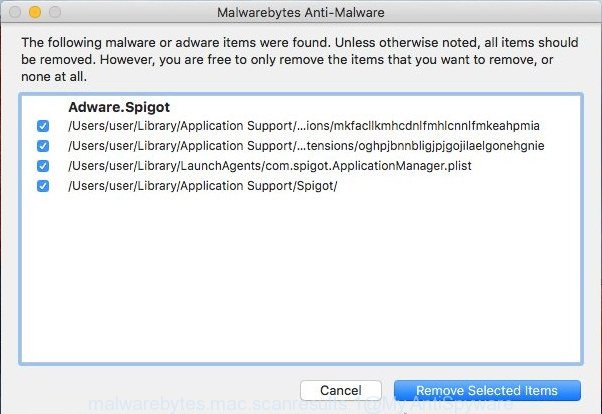What is UpdateFilter
UpdateFilter is an adware program. Adware is something that designed in order to show third-party advertisements to the user without asking his permission. Adware takes control of web-browsers and redirects them to unwanted webpages such as the UpdateFilter every time you surf the Web. Adware can end up on your computer in various ways. In many cases is when you download free applications and forget to uncheck the box for the optional software installation.

Unwanted ads
Another reason why you need to remove adware software is its online data-tracking activity. Adware may collect your Web surfing activity by recording URLs visited, IP addresses, internet browser version and type, cookie information, Internet Service Provider (ISP) and web pages visited. Such kind of behavior can lead to serious security problems or user information theft. This is another reason why the UpdateFilter adware should be uninstalled sooner.
How does UpdateFilter get on your MAC system
Adware software usually comes on the Apple Mac with free applications. In many cases, it comes without the user’s knowledge. Therefore, many users aren’t even aware that their machine has been infected with potentially unwanted apps and adware. Please follow the easy rules in order to protect your MAC from adware and potentially unwanted applications: do not install any suspicious applications, read the user agreement and choose only the Custom, Manual or Advanced installation method, do not rush to press the Next button. Also, always try to find a review of the program on the Web. Be careful and attentive!
Threat Summary
| Name | UpdateFilter, Update Filter 1.0 app |
| Type | adware, potentially unwanted application (PUA), popup virus, popup advertisements, pop-ups |
| Symptoms |
|
| Removal | UpdateFilter removal guide |
How to Remove UpdateFilter
The following steps will help you to remove UpdateFilter ads from the Google Chrome, Safari and Mozilla Firefox. Moreover, the few simple steps below will allow you to get rid of malicious software, hijackers, PUPs and toolbars that your MAC system may be infected. Please do the guidance step by step. If you need help or have any questions, then ask for our assistance or type a comment below. Read it once, after doing so, please bookmark this page (or open it on your smartphone) as you may need to shut down your web-browser or reboot your computer.
To remove UpdateFilter, use the following steps:
- How to delete UpdateFilter adware software without any software
- Automatic Removal of UpdateFilter
- How to stay safe online
- Finish words
How to delete UpdateFilter adware software without any software
In most cases, it is possible to manually remove UpdateFilter . This way does not involve the use of any tricks or removal tools. You just need to recover the normal settings of the machine and web-browser. This can be done by following a few simple steps below. If you want to quickly remove adware, as well as perform a full scan of your MAC OS, we recommend that you run malware removal tools, which are listed below.
Delete PUPs through the Finder
First, go to the Finder and uninstall dubious apps, all programs you don’t remember installing. It is important to pay the most attention to software you installed just before UpdateFilter ads appeared on your web browser. If you do not know what a program does, look for the answer on the Net.
Open Finder and click “Applications”.

Carefully browse through the list of installed applications and remove all questionable and unknown programs.
Once you have found anything suspicious that may be the UpdateFilter adware software or other potentially unwanted application (PUA), then right click this application and choose “Move to Trash”. Once complete, Empty Trash.
Remove UpdateFilter adware from Google Chrome
If you are getting UpdateFilter ads, then you can try to delete it by resetting Chrome to its original settings. It will also clear cookies, content and site data, temporary and cached data. However, your saved passwords and bookmarks will not be changed, deleted or cleared.
First start the Chrome. Next, click the button in the form of three horizontal dots (![]() ).
).
It will show the Google Chrome menu. Select More Tools, then click Extensions. Carefully browse through the list of installed add-ons. If the list has the extension signed with “Installed by enterprise policy” or “Installed by your administrator”, then complete the following tutorial: Remove Google Chrome extensions installed by enterprise policy.
Open the Google Chrome menu once again. Further, press the option named “Settings”.

The browser will open the settings screen. Another solution to show the Chrome’s settings – type chrome://settings in the browser adress bar and press Enter
Scroll down to the bottom of the page and click the “Advanced” link. Now scroll down until the “Reset” section is visible, as shown on the image below and click the “Reset settings to their original defaults” button.

The Google Chrome will show the confirmation dialog box as on the image below.

You need to confirm your action, click the “Reset” button. The browser will run the process of cleaning. After it’s finished, the internet browser’s settings including home page, search provider by default and new tab page back to the values which have been when the Chrome was first installed on your computer.
Delete UpdateFilter from Safari
By resetting Safari web-browser you revert back your web browser settings to its default state. This is first when troubleshooting problems that might have been caused by the UpdateFilter adware.
Click Safari menu and select “Preferences”.

It will open the Safari Preferences window. Next, click the “Extensions” tab. Look for unknown and suspicious extensions on left panel, choose it, then click the “Uninstall” button. Most important to get rid of all unknown plugins from Safari.
Once complete, click “General” tab. Change the “Default Search Engine” to Google.

Find the “Homepage” and type into textfield “https://www.google.com”.
Remove UpdateFilter from Firefox by resetting web-browser settings
Resetting your Firefox is first troubleshooting step for any issues with your browser application, including the UpdateFilter ads. However, your saved bookmarks and passwords will not be lost. This will not affect your history, passwords, bookmarks, and other saved data.
First, run the Mozilla Firefox and press ![]() button. It will show the drop-down menu on the right-part of the internet browser. Further, click the Help button (
button. It will show the drop-down menu on the right-part of the internet browser. Further, click the Help button (![]() ) as shown on the image below.
) as shown on the image below.

In the Help menu, select the “Troubleshooting Information” option. Another way to open the “Troubleshooting Information” screen – type “about:support” in the web-browser adress bar and press Enter. It will display the “Troubleshooting Information” page as shown in the following example. In the upper-right corner of this screen, click the “Refresh Firefox” button.

It will display the confirmation prompt. Further, click the “Refresh Firefox” button. The Mozilla Firefox will start a process to fix your problems that caused by the UpdateFilter adware. After, it’s done, click the “Finish” button.
Automatic Removal of UpdateFilter
Manual removal is not always as effective as you might think. Often, even the most experienced users can not completely get rid of UpdateFilter ads. So, we suggest to check your Apple Mac for any remaining harmful components with free adware removal software below.
How to remove UpdateFilter with MalwareBytes AntiMalware (MBAM)
You can remove UpdateFilter automatically through the use of MalwareBytes Anti-Malware (MBAM). We advise this free malware removal utility because it can easily remove hijacker infection, adware software, PUPs and toolbars with all their components such as files, folders and registry entries.

Visit the page linked below to download the latest version of MalwareBytes Anti Malware (MBAM) for Mac.
20935 downloads
Author: Malwarebytes
Category: Security tools
Update: September 10, 2020
After downloading is complete, run it and follow the prompts. Click the “Scan” button . MalwareBytes Free program will scan through the whole MAC for the UpdateFilter adware. This process may take quite a while, so please be patient. While the MalwareBytes AntiMalware program is scanning, you can see how many objects it has identified as threat. Make sure all threats have ‘checkmark’ and click “Remove Selected Items” button.
The MalwareBytes Anti Malware is a free program that you can use to get rid of all detected folders, files, malicious services and so on.
How to stay safe online
Use an ad blocking utility such as AdGuard will protect you from harmful ads and content. Moreover, you can find that the AdGuard have an option to protect your privacy and stop phishing and spam websites. Additionally, ad-blocker programs will help you to avoid annoying pop up advertisements and unverified links that also a good way to stay safe online.

Download AdGuard on your MAC OS by clicking on the link below.
3749 downloads
Author: © Adguard
Category: Security tools
Update: January 17, 2018
Once the download is complete, run the downloaded file. The “Setup Wizard” window will show up on the computer screen.
Follow the prompts. AdGuard will then be installed. A window will show up asking you to confirm that you want to see a quick guide. Click “Skip” button to close the window and use the default settings, or click “Get Started” to see an quick guide which will help you get to know AdGuard better.
Each time, when you start your MAC OS, AdGuard will start automatically and stop unwanted pop up advertisements, block harmful and misleading web pages.
Finish words
Now your MAC should be clean of the UpdateFilter adware. We suggest that you keep AdGuard (to help you block unwanted popup advertisements and undesired malicious web pages) and MalwareBytes Free (to periodically scan your MAC OS for new malicious software, hijackers and adware). Make sure that you have all the Critical Updates recommended for Mac OS. Without regular updates you WILL NOT be protected when new hijacker infections, malicious apps and adware software are released.
If you are still having problems while trying to remove UpdateFilter ads from your web browser, then ask for help here.


















